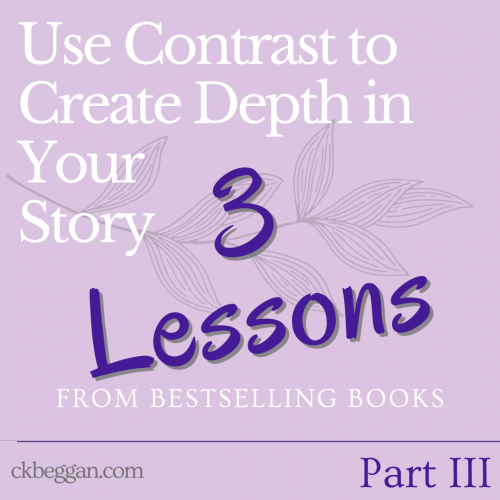Welcome back to the last of this three-part blog series on how contrast makes for a great read. In this post, I’ll also touch on how classic techniques from another genre made a story more exciting.

III. The contrast of a known commodity and a total mystery
Want to keep the pages turning? Take a look at what Bethany C. Morrow did with her two teen narrators in A Song Below Water. (You can also find my review here.)
Being a siren is dangerous—hated, too. Tavia is a black teenage girl dealing with how the world perceives and treats her. She’s also a closeted siren in fear of being ripped from the too-safe world her father created. To her father, the worst thing that could happen is if everyone found out who Tavia really is.
And then there is A Song Below Water‘s other narrator, Effie. Effie swims like a dolphin, suffers from itchy, dry skin that no lotion in the world can correct, and, for a few days every year, dons a mermaid tail. But that last part’s make-believe for a Renaissance fair. The rest of the year she’s (cheesy pun warning) a fish out of water.
Shy and in pain from the loss of her mother, Effie has never known her father. It’s clear that something is going on with her, but she has no idea what. The survivor of a frightening event, the strange and scary just keeps following her. Tavia knows exactly what can go wrong. Effie can’t even guess.
That undercurrent of fear and mystery helps keep A Song Below Water moving at a brisk pace. It borrows a few tricks from the mystery and horror genres to do so.
With Tavia, we immediately know she is under threat. Tav knows what could happen, and she has to stay one step ahead to stay safe. Will she ever stop running and confront what stalks her? With Effie, on the other hand, we see the wary detective on a case too close to home, full of the drive to know and the fear of what she’ll find. The few clues she has make no sense, and those who could help her aren’t talking.
Instant suspense. That tension is key to keeping the reader engaged.
The Lesson: The relationship between these two found-family sisters is beautiful. But the contrast between them—their opposing but equally anxious what-ifs as they question themselves and their world—keeps the reader moving in dogged pursuit of the outcome. A Song Below Water showed me a new rule for writing:
For every character certain of their abilities and who they are, there should be another who hasn’t got a clue.
That’s all! Thanks so much for joining me. I hope these posts will help you to take another look at your own favorite books. Write on!